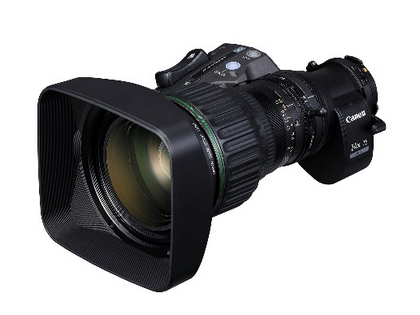Follow us:
Canon to sponsor the Tokyo 2020 Olympic and Paralympic Games

Canon press release:
Canon to sponsor the Tokyo 2020 Olympic and Paralympic Games as an official Tokyo 2020 Gold Partner (Still Cameras and Desktop Reprographic Hardware)
TOKYO, February 18, 2015—Canon Inc. and Canon Marketing Japan Inc. announced today that the Company will support the Games of the XXXII Olympiad and the Tokyo 2020 Paralympic Games (Tokyo 2020) as a Tokyo 2020 Gold Partner in the category of Still Cameras and Desktop Reprographic Hardware which include desktop printers.
Canon has entered an agreement with the Tokyo 2020 Organising Committee, making the Company a Tokyo 2020 Gold Partner. In this capacity, Canon will contribute to the delivery of the Games of the XXXII Olympiad and the Tokyo 2020 Paralympic Games, which will be held in 2020 in Tokyo, and in addition, will provide support to the Japanese national Olympic and Paralympic teams competing from 2016 to 2020.
Tokyo 2020 Gold Partners are positioned as the highest tier of the Tokyo 2020 domestic Sponsorship Programme. As a sponsor of Tokyo 2020, Canon products and services in the still cameras and desktop reprographic hardware categories, which include desktop printers, will be designated as Official Products of the Games.
Canon will provide behind-the-scenes support to members of the press covering the Games, including camera and lens maintenance services and product loans. Drawing from the Company’s experience and know-how cultivated to date, Canon will improve on-site media support for cameras during Tokyo 2020, including on-site camera service and support centers to assist the numerous journalists and sports photographers from various countries and regions across the world.
Canon will continue contributing to the advancement of sports through the use of Canon still cameras and desktop reprographic hardware which include desktop printers.
Overview of Tokyo 2020 Gold Partner agreement
Agreement programme: Tokyo 2020 Gold Partner—”Tier 1″ within Tokyo 2020 domestic Sponsorship Programme
Products and services: Still Cameras and Desktop Reprographic Hardware
Agreement period: From February 18, 2015, to December 31, 2020
Region: Japan
Canon-sponsored Games
| Event | Dates | Location |
|---|---|---|
| Games of the XXXII Olympiad | Jul. 24-Aug. 9, 2020 | Tokyo, Japan |
| Tokyo 2020 Paralympic Games | Aug. 25-Sep. 6, 2020 | Tokyo, Japan |
Canon-sponsored Japanese NOC Delegations attending the following Olympic and Paralympic Team events
| Event | Dates | Location |
|---|---|---|
| 2nd Lillehammer Winter Youth Olympic Games | Feb. 26-Mar. 6, 2016 | Lillehammer, Norway |
| Games of the XXXI Olympiad | Aug. 5-21, 2016 | Rio de Janeiro, Brazil |
| Rio De Janeiro 2016 Paralympic Games | Sep. 7-18, 2016 | Rio de Janeiro, Brazil |
| XXIII Olympic Winter Games | Feb. 9-25, 2018 | PyeongChang, South Korea |
| PyeongChang 2018 Winter Paralympic Games | Mar. 9-18, 2018 | PyeongChang, South Korea |
| 3rd Summer Youth Olympic Games | 2018 (dates TBD) | Buenos Aires, Argentina |
| 3rd Winter Youth Olympic Games | 2020 (dates TBD) | Location TBD |
| Games of the XXXII Olympiad | Jul. 24-Aug. 9, 2020 | Tokyo, Japan |
| Tokyo 2020 Paralympic Games | Aug. 25-Sep. 6, 2020 | Tokyo, Japan |


